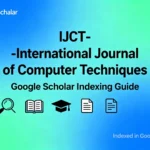
Open Access Computer Science Journals: Free Global Research Access
Open Access Computer Science Journals: Democratizing Knowledge Globally
Publish research freely accessible to students, practitioners, and researchers worldwide. Maximize citations, accelerate innovation, and fulfill the core mission of scientific progress through unrestricted knowledge dissemination.
🌍 Publish Open Access ResearchWhy Open Access Computer Science Journals Matter
The traditional subscription model—where computer science research hides behind paywalls charging $30-50 per article or $5,000+ institutional subscriptions—contradicts the fundamental scientific principle of open knowledge exchange. Open access computer science journals dismantle these barriers, ensuring breakthrough algorithms, system architectures, and theoretical innovations reach everyone from PhD students in developing nations to industry engineers solving practical problems.
Consider the practical implications: A student in Sub-Saharan Africa researching machine learning cannot access paywalled papers costing more than monthly income. An industry developer implementing security protocols cannot read academic cryptography research locked behind subscription barriers. A policy maker evaluating AI regulation cannot reference scholarly work requiring institutional library access. OA CS publication solves these exclusion problems, democratizing knowledge that should serve humanity broadly rather than privileged institutions exclusively.
The open access movement gained momentum recognizing that publicly-funded research should return to the public domain freely. When taxpayers support NSF grants, NIH funding, or international research councils, why should resulting publications hide behind commercial paywalls extracting profit from publicly-financed discoveries? Open access research journals realign incentives, prioritizing knowledge dissemination over publisher revenue maximization.
For comprehensive guidance on selecting appropriate publication venues across all computational disciplines, see our complete computer science journals guide. This focused resource explores open science publishing models, article processing charge structures, Creative Commons licensing options, and strategic decisions maximizing research impact through unrestricted access.
Open Access Impact Statistics
Research demonstrates measurable advantages of freely accessible publications
Maximize Your Research Impact Through Open Access
IJCT’s 100% open access model ensures your work reaches millions of researchers, practitioners, and students globally without barriers
🔓 Submit Open Access ResearchTangible Benefits of Open Access Publication
Publishing in open access computer science journals provides measurable advantages extending beyond philosophical commitments to knowledge democratization. Research analyzing hundreds of thousands of publications across disciplines consistently demonstrates open access citation premiums, broader readership, and accelerated knowledge transfer.
Citation Advantage
Meta-analyses demonstrate 30-50% higher citation rates for open access articles versus paywalled equivalents controlling for field, impact factor, and publication year. Researchers cite work they can freely access—obvious yet profound. Citations drive academic recognition, career advancement, funding success, and intellectual influence. Open access publications accumulate citations faster initially and sustain higher long-term citation trajectories.
Mechanism: Paywalls create friction—researchers encounter interesting titles in search results, hit subscription barriers, abandon papers rather than paying $35 for single articles. Open access eliminates this friction, converting interested readers into citing authors. Industry practitioners (who rarely have institutional subscriptions) particularly contribute citations when accessing freely available research.
Global Accessibility
Unrestricted access enables participation from all economic contexts. Researchers at universities in developing nations (representing majority of world’s population) cannot afford subscription databases costing institutions $10,000-50,000 annually. Open access publications reach Nigerian computer scientists, Indian engineering students, Brazilian AI researchers—expanding scholarly conversations beyond privileged Western institutions.
Practical impact: Algorithm improvements, security vulnerabilities, system optimizations benefit from diverse perspectives globally. Restricting access to affluent institutions limits potential contributions from brilliant minds lacking institutional privileges. Open access realizes meritocracy—best ideas win regardless of author’s economic circumstances.
Industry Adoption
Practitioners adopt academic innovations when accessible. Software engineers at startups, security analysts at SMEs, data scientists at non-profits—these practitioners drive real-world technological advancement but lack university library access. Open access publications enable industry adoption of academic research, closing the notorious academic-industry gap where brilliant papers gather dust because practitioners cannot read them.
Technology transfer: Companies implementing your machine learning algorithm, systems adopting your distributed consensus protocol, developers deploying your optimization technique—these practical applications amplify research impact beyond citation counts. Open access facilitates this translation from theory to practice.
Educational Impact
Students worldwide access cutting-edge research freely. Undergraduate students at teaching-focused institutions, graduate students at under-resourced universities, self-taught programmers pursuing knowledge independently—all benefit from unrestricted access to scholarly literature. Open access democratizes learning, enabling ambitious students anywhere to engage with frontier research regardless of institutional affiliation.
Course integration: Professors assign open access papers freely without worrying about student access barriers. Textbooks cite open access research students can actually read. Tutorial blogs link freely accessible publications. Educational ecosystem thrives when knowledge flows unimpeded by financial obstacles.
Funding Mandate Compliance
Major research funders require open access publication. NSF, NIH, European Research Council, Wellcome Trust, Gates Foundation—these funding bodies mandate public access to research results they finance with public money. Open access journals automatically comply with these mandates, avoiding administrative burdens of embargo periods, repository deposits, and compliance verification plaguing traditional subscription models.
Practical benefit: Grant applications strengthen when proposing open access publication, demonstrating commitment to knowledge dissemination. Researchers avoid compliance headaches managing embargo periods versus funder deadlines. Immediate open access satisfies all mandate requirements without exception.
Faster Knowledge Dissemination
Open access accelerates scientific progress globally. When discoveries publish freely accessible, other researchers build upon them immediately rather than waiting for institutional subscription access or inter-library loan delays (weeks-to-months). Rapid knowledge propagation speeds collective progress—algorithms improve faster, systems evolve quicker, theories advance more rapidly when researchers worldwide engage simultaneously rather than sequentially as subscription access permits.
Network effects: Each additional researcher accessing your work increases probability of productive extensions, implementations, validations, or applications. Paywalls artificially constrain these network effects; open access unleashes them fully.
Understanding Open Access Publishing Models
Open access research journals operate through various business models funding publication costs differently than subscription journals. Understanding these models clarifies why article processing charges (APCs) exist, distinguishes legitimate open access from predatory publishers, and guides strategic venue selection.
Gold Open Access
Immediate free access upon publication. Articles appear in open access journals providing unrestricted access from day one. Authors or institutions pay article processing charges (APCs) covering publication costs: peer review management, copyediting, DOI registration, hosting infrastructure, long-term archiving. Readers access content freely forever without subscriptions or paywalls.
- Typical APCs: Range $500-$5,000 depending on journal prestige, publisher overhead, geographic region. IJCT: Competitive rates with fee waivers available
- Advantages: Immediate accessibility, permanent free access, full compliance with funder mandates, no embargo periods
- Examples: PLOS journals, BioMed Central, MDPI, IJCT, many society journals transitioning to open access
- Licensing: Creative Commons licenses (CC-BY most common) define reuse permissions—typically allow commercial use, adaptations with attribution
Green Open Access
Author self-archiving in institutional repositories. Researchers publish in traditional subscription journals but deposit manuscript versions in open repositories (arXiv, institutional repositories, ResearchGate). Provides some public access while journals maintain subscription revenue through formatted published versions.
- Embargo periods: Publishers often require 6-24 month delays before repository deposit, reducing immediate accessibility
- Version confusion: Repository versions may be preprints (pre-peer-review) or postprints (accepted but unformatted), causing citation challenges
- Partial solution: Better than complete paywall but inferior to immediate gold open access for readers, citations, and impact
- Prevalence: Common in physics (arXiv culture) and computer science (conference preprints), less established in other fields
Diamond/Platinum Open Access
Free for readers AND authors. Journals funded through institutional subsidies, society memberships, government grants, or philanthropic support rather than author fees or subscriptions. Represents ideal open access model but requires alternative funding sources limiting scalability.
- Funding sources: University libraries consortia, learned societies, government science ministries, foundation endowments
- Advantages: No financial barriers for readers or authors, truly democratized publication access
- Limitations: Difficult to scale without institutional support, limited capacity constrains article volumes
- Examples: Some society journals, Latin American SciELO network, European overlay journals
Understanding Creative Commons Licensing
Open access computer science journals typically use Creative Commons licenses defining reuse permissions. Understanding these licenses clarifies what “open access” means legally:
CC-BY (Attribution): Most permissive—allows commercial use, adaptations, derivative works requiring only original author attribution. Enables maximum knowledge dissemination including commercial applications.
CC-BY-SA (ShareAlike): Requires derivative works use same license—”copyleft” provision ensuring adaptations remain open. Common in fields valuing reciprocal openness.
CC-BY-NC (Non-Commercial): Prohibits commercial use—restricts industry adoption reducing practical impact. Generally discouraged by open access advocates.
CC-BY-ND (No Derivatives): Prohibits adaptations—contradicts open science principles of building upon existing work. Rarely used in legitimate open access journals.
IJCT uses CC-BY licensing maximizing reuse potential including commercial applications, educational uses, translations, adaptations—advancing knowledge dissemination without artificial restrictions.
For specialized AI/ML research benefiting particularly from open access (enabling industry implementation of algorithms, widespread adoption of techniques), explore our AI machine learning journals guide.
Understanding Article Processing Charges (APCs)
Confusion surrounding article processing charges stems from decades of “free” traditional publication where subscription revenues hidden from authors funded journal operations. Open access makes costs explicit: someone must pay for peer review coordination, copyediting, DOI registration, hosting infrastructure, and long-term archiving. In open access, authors/funders pay instead of readers/libraries.
| Cost Component | What It Funds | Typical Range |
|---|---|---|
| Peer Review Management | Editorial staff coordinating reviewer invitations, managing review platform, tracking submissions, handling revisions | $200-$800 per article |
| Copyediting & Formatting | Professional editors improving clarity, correcting grammar, formatting to journal standards, typesetting equations/figures | $300-$1,000 per article |
| DOI Registration & Indexing | CrossRef DOI assignment, metadata distribution to discovery services (Google Scholar, PubMed, Scopus), database indexing fees | $50-$200 per article |
| Hosting & Infrastructure | Website hosting, submission platform licensing, article storage, PDF generation, mobile optimization, backup systems | $100-$400 per article |
| Long-Term Archiving | LOCKSS/CLOCKSS preservation networks, permanent archiving ensuring articles accessible decades hence despite technology changes | $50-$150 per article |
| Administrative Overhead | Legal compliance, ethical oversight, plagiarism detection, business operations, marketing/outreach | $200-$500 per article |
Evaluating Reasonable APCs vs. Predatory Pricing
Legitimate journals charge APCs covering actual costs; predatory publishers maximize profit through minimal services. How to distinguish:
Reasonable APC indicators: (1) Transparent pricing disclosed upfront, (2) Costs align with services provided (peer review, copyediting, DOI, indexing), (3) Fee waivers available for developing nation authors and financial hardship cases, (4) Institutional/society discounts for members, (5) Competitive with similar-quality journals in same field.
Predatory pricing red flags: (1) Extremely cheap ($50-150) suggesting rubber-stamp approval without real services, (2) Extremely expensive ($5,000+) exploiting author desperation without commensurate quality, (3) Hidden fees appearing after acceptance, (4) No fee waiver policies excluding economically disadvantaged researchers, (5) Aggressive discounting suggesting desperation for submissions.
IJCT maintains competitive APCs covering genuine publication costs with transparent pricing and generous fee waiver programs ensuring financial barriers don’t exclude quality research from under-resourced researchers.
Funding Sources for APCs
How Researchers Cover Article Processing Charges
Multiple funding sources enable open access publication without personal expense:
1. Research Grants: Most funding agencies (NSF, NIH, European Research Council, Gates Foundation) allow budgeting APCs as direct costs. Include publication expenses in grant proposals explicitly—funders recognize open access value.
2. Institutional Support: Many universities maintain central funds supporting faculty open access publication. Check with your library’s scholarly communication office about available subsidies.
3. Fee Waivers: Legitimate open access journals offer waivers for: researchers in World Bank-classified developing nations, unfunded research projects, early-career scientists without grants, authors demonstrating financial need. IJCT provides comprehensive waiver program.
4. Departmental Funds: Academic departments sometimes allocate publication budgets for faculty/students. Inquiry with department chairs about available resources.
5. Society Memberships: Professional societies (ACM, IEEE) often provide publication discounts or subsidies for members—check membership benefits.
Important: Never let APC concerns prevent open access publication. Legitimate journals work with authors on payment—fee waivers exist specifically for researchers lacking funds. Financial barriers should exclude predatory publishers, not legitimate scholarship.
For guidance on the complete computer science journal submission process including APC discussion timing and fee waiver requests, consult our comprehensive guide.
Transparent Pricing, Generous Waivers
IJCT offers competitive APCs with comprehensive fee waiver program ensuring financial constraints don’t prevent quality publication
💰 Check Pricing & Waiver EligibilityEvaluating Open Access Journal Quality
The proliferation of open access computer science journals unfortunately includes predatory publishers exploiting author-pays models without providing legitimate peer review, copyediting, or indexing. Learning quality assessment criteria protects your research reputation and career.
Legitimacy Indicators for OA Journals
DOAJ Listing
Directory of Open Access Journals (DOAJ) maintains standards. DOAJ listing requires transparent peer review, editorial board disclosure, clear licensing, ethical policies, DOI usage, and preservation commitments. Predatory journals rarely meet these standards. Check journal DOAJ status at doaj.org before submitting.
Transparent Peer Review
Legitimate journals describe review processes explicitly. Detailed explanations of reviewer selection, evaluation criteria, editorial decision-making, and quality standards signal authentic peer review versus rubber-stamp approval. Vague claims (“rigorous peer review”) without specifics suggest predatory operations.
Verifiable Editorial Board
Real journals list real editors with institutional affiliations. Editorial board members should have: institutional email addresses (not Gmail/Yahoo), ORCID IDs, publication records in relevant fields, active academic positions. Verify listed editors actually agreed to serve—predatory publishers fabricate boards using names without permission.
Major Database Indexing
Legitimate journals appear in multiple databases. Google Scholar, CrossRef, Scopus, Web of Science, IEEE Xplore, ACM Digital Library—these indexes require quality standards. Total absence from all major databases signals predatory operation. Verify indexing claims by searching databases directly.
Professional Production Quality
Published articles demonstrate editing and formatting. Legitimate journals provide copyediting correcting grammar/style, professional typesetting with proper equation formatting, high-quality figures, consistent citation styles. Predatory publishers simply convert author Word files to PDF without processing.
Realistic Acceptance Rates
Selective journals reject substantial percentages. Legitimate scholarly publishing maintains standards—typical acceptance rates 30-70% depending on field and prestige. Claims of “90% acceptance” or “guaranteed publication” indicate pay-to-publish schemes lacking quality control. Rejection demonstrates standards.
Red Flags Signaling Predatory OA Publishers
Warning signs requiring extreme caution before submission:
1. Aggressive spam solicitation: Unsolicited emails with generic invitations (“Your excellent research”) and promises of “easy publication” indicate harvesting operations seeking APC revenue.
2. Suspiciously broad scope: Journals claiming coverage from “mathematics to medicine” lack focused expertise. Legitimate journals maintain coherent scope enabling appropriate reviewer matching.
3. Fake impact factors: Citations of “impact factors” from unofficial organizations (Global Impact Factor, Universal Impact Factor) create fraudulent metrics. Legitimate impact factors come only from Clarivate Web of Science.
4. Poor website quality: Typos, broken links, stock photos, inconsistent formatting signal low-quality operations. Professional publishers maintain professional web presence.
5. Pressure tactics: Urgent deadlines (“submit within 48 hours”), artificial scarcity (“only 3 slots remaining”), or guaranteed acceptance promises indicate scams, not scholarship.
6. Missing institutional affiliations: Publisher addresses at residential locations, missing office contact information, or untraceable physical presence suggest fraudulent operations.
When in doubt: Check publisher against Beall’s List successors (predatory publisher databases), consult librarians, ask colleagues about journal reputation, verify DOAJ listing. Legitimate journals welcome scrutiny; predatory publishers hide information.
Why Choose IJCT for Open Access Publication
IJCT combines open access computer science journals benefits with rapid publication, rigorous peer review, and transparent operations distinguishing legitimate scholarship from predatory publishing.
100% Open Access Model
All articles freely accessible immediately and permanently. No embargo periods, no subscription barriers, no paywall restrictions. Creative Commons CC-BY licensing enables maximum reuse including commercial applications, translations, adaptations, educational uses. Your research reaches everyone from PhD students worldwide to industry practitioners implementing innovations.
Rapid Open Access Publication
24-hour peer review accelerates knowledge dissemination. Traditional open access journals maintain conventional 6-12 month review timelines. IJCT combines open access benefits with fast-track publication—research freely accessible within 2-3 weeks submission-to-publication versus 9-18 months traditional timelines. Learn more about our fast publication system.
Transparent Pricing & Waivers
Clear APC structure with generous waiver program. Competitive article processing charges disclosed upfront with no hidden costs. Fee waivers automatically granted for: World Bank-classified developing nation researchers, unfunded research projects, early-career scientists, authors demonstrating financial need. We believe financial constraints shouldn’t prevent quality scholarship.
Global Indexing & Discovery
Immediate Google Scholar indexing ensures discoverability. CrossRef DOI registration, metadata distribution to academic databases, inclusion in institutional repositories. Your research discoverable by 100+ million monthly Google Scholar users worldwide within weeks of publication. Open access maximizes citations and impact through unrestricted discoverability.
Rigorous Peer Review
Expert evaluation maintains quality standards. Double-blind peer review by active computer science researchers in specific subdomains. Structured evaluation rubrics, detailed feedback, selective acceptance (~40% rejection rate) demonstrate quality control. Speed doesn’t compromise standards—systematic reviewer management enables rapid yet thorough evaluation. Read about our peer review process.
Funder Compliance
Automatic compliance with open access mandates. NSF, NIH, European Research Council, Gates Foundation, Wellcome Trust—all major funders require public access. IJCT’s immediate open access satisfies these mandates without embargo periods, repository deposits, or compliance verification hassles. Grant applications strengthen citing open access publication commitment.
Experience True Open Access Publication
IJCT’s transparent, rapid, rigorous open access model maximizes your research impact globally
🚀 Submit Open Access ResearchPublish Computer Science Research Accessible to Everyone, Everywhere
Democratize knowledge. Maximize citations. Accelerate innovation. IJCT’s 100% open access model ensures your research reaches millions without barriers—from students in developing nations to industry practitioners implementing breakthroughs.
International Journal of Computer Techniques
ISSN 2394-2231 | 100% Open Access | CC-BY Licensing | Google Scholar Indexed
Transparent APCs | Fee Waivers Available | Immediate Global Accessibility
Email: editorijctjournal@gmail.com




